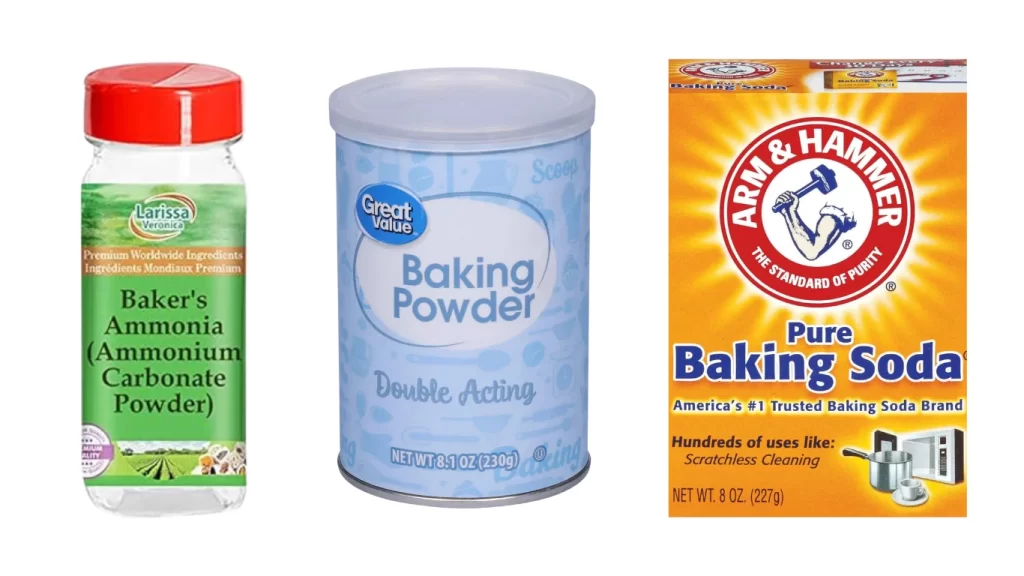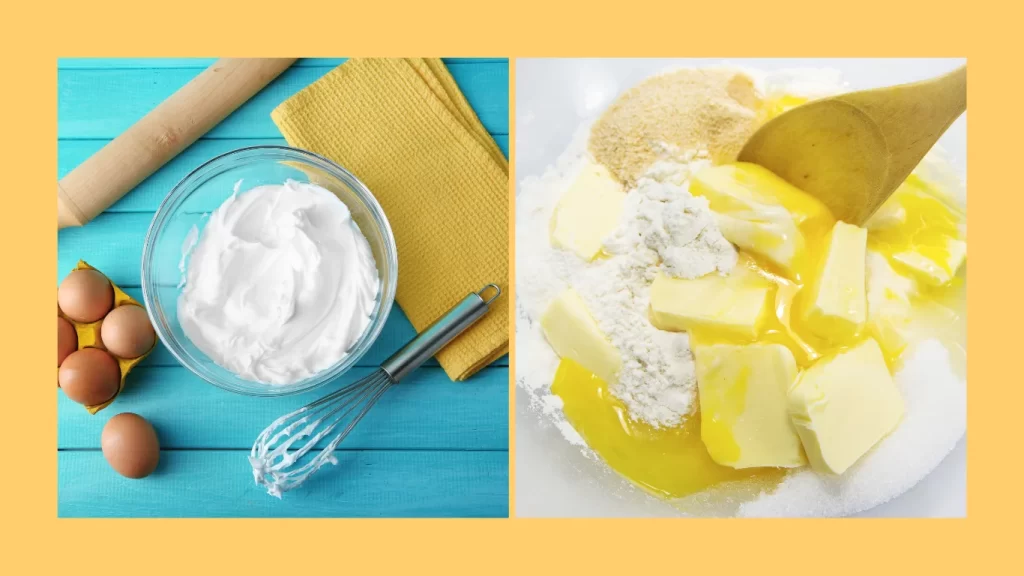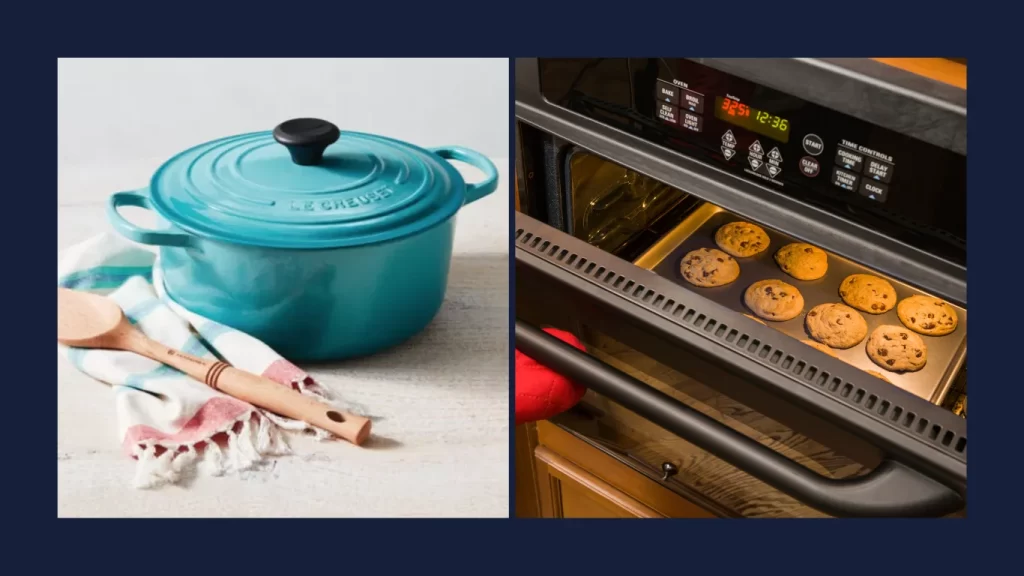The secret to getting baked goods to rise is a leavening agent. Chances are that most people are just using leavening agents without understanding the chemistry behind them. There four common categories leavening agents fall under, and in this article, we’ll discuss the difference between them, how we use them, why we use them, and how they work to raise our baked goods.
What is a leavening agent?
A leavening agent is a substance that expands dough or cake mixture to double its size. The substance releases a gas when it is combined with any liquid, acid, or heat, which causes the rising effect. There are four types of leavening agents used in baking: chemical, biological, physical, and mechanical.
Chemical Leaveners
Some common chemical leavening agents in baking are listed below.

Baking soda which is also called bicarbonate of soda or sodium bicarbonate. Baking soda combined with any acid forms a gas called carbon dioxide. This gas produces bubbles that result in your dough or batter rising.
Baking Powder is similar to baking soda. It is a dry mixture of carbonate or bicarbonate and an acid. Baking powder adds volume and airiness to the overall texture of baked goods.
Baker’s Ammonia, or ammonium carbonate, is used in crackers and certain cookies to add a crisp, light texture.
Biological Leaveners
The most common biological leavening agent is yeast, which is very helpful in the rising process of dough. Some other biological leavening agents are listed below.
Active Dry Yeast is dry granular yeast that is activated through warm water.
Instant Dry Yeast is also dry granular yeast; however, it does not need to be activated with warm water; it can be added directly to the flour mixture.
Mechanical Leaveners
Mechanical leavening agents are essentially whipped up mechanically to achieve the same puffiness results. Mixing, whether by hand or a mixer, creates tiny air bubbles, releasing the gas in the ingredients and making them rise. Some examples of mechanical leavening agents are listed below.

Whipped Cream comes in a heavy cream fat form. Once whipped, air particles are trapped between the layers of cream, which expands, and that is essentially how it holds its shape.
Egg Whites that undergo a rapid whipping process form soft peaks because air bubbles are trapped between the mixture.
Butter and sugar creamed together forms a thick, buttery texture, which results in raised baked goods. Many recipes call for whipping the butter and sugar as the first step to create a puffy, buttery texture.
Physical Leaveners
Due to high baking temperatures, physical leaveners refer to the steam that forms in your batter, dough, etc.. Steam forms as a result of the heat. Any liquid introduced to heat transforms into steam, which then makes its way between the layers of dough, baking into flakey, delicate layers. Steam can be used in various ways to contribute to the baking process of dough and batters.
Pan of water: This method is highly effective and adds a fluffy and soft touch to baked goods. Simply fill a sheet pan or oven-safe bowl with water and place it in the oven during preheat. Once your dough or cake batter is ready, put it on your oven rack and bake as needed.

Steam oven: A steam oven is mechanically designed to provide a steaming effect.
Dutch oven: A Dutch oven is usually made of seasoned cast iron, cast aluminium, or cast iron and it comes with a fitted lid. The specialty of this pan is that it traps the heat and creates steam as the dough rises.
Water bath: This method involves placing a pan of water in the oven and your baking pan inside the pan of water. This adds moisture and heat to the oven and provides a constant temperature to your baking pan, which offers excellent results for cheesecakes and custards, which tend to crack during baking.
Baking Flops and Solutions
Cake Deflates in the Middle
Overuse of baking soda is often responsible for cakes that deflate in the middle when brought out of the oven. Baking soda reacts quickly in the oven, and as we mentioned before, it is a leavening ingredient that causes gas bubbles to escalate to the top of the batter and then pop.
A solution to this problem is weighing your ingredients properly. Additionally, before putting your cake pan in the oven, let it sit for a few minutes so some gas bubbles can escape before being baked.
Learn how to measure your ingredients properly here.
Flattened Cookies
Try adding 2 or more tablespoons of flour to prevent your cookies from becoming flat. Another method is to form the dough and place it in the refrigerator or freezer for ten minutes before baking.
Hard and Dense Bread
Making perfect bread is challenging, and there can be several reasons why your bread can become rock-hard. For one, kneading the dough is an important step. This activates the yeast with the flour and water, which causes the dough to rise. Another mistake is mixing salt with yeast. Salt kills the yeast before it has the opportunity to activate the dough.
Closing Thoughts – Leavening Agents in Baking
Once you understand the science of leavening agents, the various types, and how they work, you can become an expert baker. Throughout this article, we explained the difference between chemical leaveners, biological leaveners, mechanical leaveners, and physical leaveners. We gave examples of leavers in each category along with a brief description. Baking is a science, and understanding the depth of baking and the ingredients included can give you the best results. When you know how these leavening agents function to produce the desired volume and texture, baking will be more enjoyable, and the results will be even better.
What is the best leavening agent?
The best leavening agent depends on the baked good you are baking. However, yeast is known to give the best results for doughs, whereas for baked goods such as cakes, cookies and tarts, you would put baking powder, baking soda, eggs, etc.
What are the main types of leavening agents?
The main leavening agents are steam, yeast, baking powder and baking soda.





